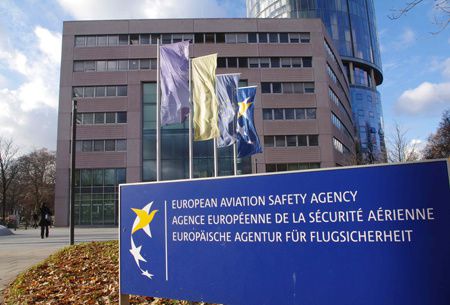Considering in addition that the Russian military satellite Luch Olymp has been recently moved to an orbital position between Intelsat 7 and 901 (18.2 and 18 degrees west respectively), the exercises of the Russian forces can indeed be seen as a rehearsal to inhibit the major NATO communication means in case of the uprising of a major crisis with Russia. “Luch” (ray) is the designation used for Russian geostationary satellites known to relay and track communications to and from spacecraft in lower orbits. The Luch Olymp has been ordered by the Russian Ministry of Defence, and as such little is known about its specific payload and mission. However, it seems that it is operated by the FSB (Federal Security Service of the Russian Federation) for “electronic intelligence”, which could mean spying information uplinked for others satellites, or even jamming downlinks with improper data. Moreover, the reason why the Luch relocation can be seen as intrusive, technically resides in the fact that the separation between the Russian satellite and the 2 geostationary Intelsat satellites is now only of 0.1 deg of orbital location. This would be very close for 2 platforms belonging to the same satellite operator, and even more for satellites being controlled by 2 different control centres in close coordination… and finally worrying knowing that the Russian government has not advised Intelsat prior drifting its satellites to 18.1°W nor has answered to any tentative of contact set by the US operator. Mrs. Kay Sears, president of Intelsat General, has strongly expressed discontent over such hazardous satellite operation putting Intelsat assets at risk.
More generally, the rise in Russian submarine patrols is an echo to the PVO strategic bombers flights, pushing ever further south close to the British and French airspaces. Nuclear submarines and bombers have been the key elements of the USSR dissuasion force during the cold war. Those events illustrate a little bit more Putin’s strategy to regain power and influence lost after the end of the soviet era.


/image%2F0519178%2F201303%2Fob_a8d1e19103a7adf514374187f1e9e0fc_patrouille-l39-21.JPG)

/image%2F0519178%2F20160407%2Fob_309730_russia-51302.jpg)
/image%2F0519178%2F20160407%2Fob_f2d22f_captura-de-pantalla-2014-04-29-a-las-1.png)
/image%2F0519178%2F20150402%2Fob_5c7709_img-1874.JPG)